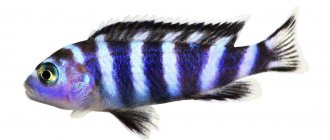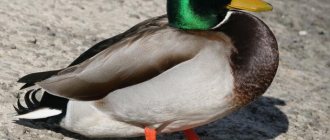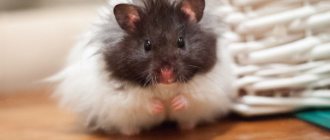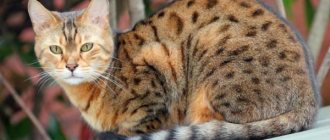Ornatus is a delicate small aquarium fish from the characin family. In the aquarium, she behaves calmly, treats decor and plants with care, and does not dig in the soil. Such residents are ideal for herbalists, where the richness and well-groomed vegetation remains in the first place. Keeping an ornatus is not difficult, but you need to know the appropriate parameters and stick to them so that the fish lives long and is healthy. Even beginners, not to mention experienced aquarists, can handle this task quite well.
Description
Signs similar to all types of phantoms: a laterally compressed flat body measuring from 4 to 6 cm, wide in the middle: from the dorsal fin to the tummy. The dorsal fin is narrow and high, shaped like a flag. The anal fin extends from the middle of the body to the tail. A little closer to the head, at some distance from the anal fin, there are pelvic fins, also noticeable and bright. The tail is two-lobed, the long outer rays are at a large angle to each other, which is why the tail looks wide, but small.
Description and natural habitat
The fish have a bizarre appearance, they are almost transparent, for which they are called phantoms or tetras. The body is almond-shaped, slightly flattened on the sides, covered with small scales of different shades. Ornatus reaches a length of up to 5 cm. The tail has two blades, a fin rises on the back, and a characteristic dark spot near the gills. With this description it will be easy to find representatives of the genus Ornatus.
In captivity, life expectancy is up to 5 years. They behave calmly in the aquarium and like to spend time in dark areas with gentle currents. They often hover in one position, sometimes moving their fins. Ornathus can swim in schools, actively changing their direction as they move.
Photo gallery of Ornatus:
The homeland of Ornathus is South and Central America. They live in the warm water of stagnant ponds, lakes, and slow-flowing rivers. In such reservoirs, the banks are densely overgrown and shaded by fallen trees. The fish feed on small insects, which the dorsal fin helps catch.
Kinds
Phantom fish has several varieties that differ in color, size and even behavior. Most species are the result of selection. In all fish, sex differences are expressed in the shape and size of the fins.
- Ornatus vulgaris - the body is elongated, bronze-pearl-colored, translucent. There are two red dots on the tail, and the pectoral fins are also tinged with red. The dorsal and anal fins are small and harmonious in size. May be red or body color. The dorsal fin has a black dot edged with white. White markings may be on the tips of the fins. Sometimes you can find a black border on the fins, and a black vertical stripe behind the gills. This is a sign of natural color and is rarely found on sale;
- Red phantom (red ornatus) - the main body color is cold red (ruby), rich on the muzzle, becoming more transparent towards the tail. The tail is black, with a white or translucent silver edge. Males have a black spot on the dorsal fin. Behind the gills, an oblong black spot is bordered with golden-pink. The fish are bright, but are more demanding of water parameters than others;
- Black phantom (black ornatus) - has a gray-silver translucent body, the color becomes more intense closer to the tail. The tail is black, the remaining fins repeat the color of the body. Behind the gills on each side there is a short oblong black spot, and the gills themselves under the eyes are reddish. The dorsal fin is lush and high, and is an ornament and distinctive feature of the fish;
- Ornatus whitefin - the appearance is similar to an ordinary phantom, only the black spots are replaced with white, and the fins themselves are a little more transparent;
- Ornathus pink - similar to ordinary ornathus, but lighter and without characteristic spots. The main color is with a pinkish tint, the fins are the same color, with faint red markings;
- Rubrostigma (Ornatus red dotted) - the body is painted in a pale silvery hue, thanks to the translucency, the reddish spine is visible through the scales. Red markings are present at the base of the caudal fin and on the gills. In the center on each side is a small, clearly defined pink spot. The border around the eye is also marked with a pink dot.
There are several fish whose names include the word “ornatus,” but the fish itself has neither physiological nor morphological connections with ordinary phantoms.
- Julidochromis ornatus is a small cichlid with an elongated body and a nasty predatory character;
- Pseudotropheus elongatus (Elongatus ornatus) is also a cichlid with the aggression, habits and character inherent in this family.
Possible diseases and maintenance problems
Nature itself has endowed ornathus with excellent health, good genetics and a strong immune system. These fish are not prone to hereditary or any other diseases characteristic of other aquarium inhabitants.
Their average lifespan in the natural environment is 5-6 years, in aquarium conditions - about 3-4, but with good care the pet’s eyelids can be extended.
The health of ornatus can be negatively affected by:
- frequent stressful situations, psycho-emotional shocks (for example, proximity to predatory fish);
- sudden change in parameters of the aquatic environment;
- improper feeding regimen, use of low-quality food;
- lack of live food and herbal supplements in the diet;
- lack of an area for relaxation and privacy in the aquarium;
- excessively bright lighting;
- pollution of the soil and the reservoir itself.
In most cases, it is enough to simply check the fluid parameters, clean the soil, the aquarium itself and decorative objects, replace the water, and the health of the ornathus will gradually be restored. This must be done in cases where the fish suddenly become lethargic and inactive, refuse food, and have lost their striking bright color. What should be especially alarming is the appearance on the body of a phantom fish of uncharacteristic specific spots that were previously absent.
If the measures taken do not give the desired result, and even more so if there are signs of traumatic injuries, you should immediately consult a veterinarian and carry out the necessary treatment.
Maintenance and care
Setting up an aquarium does not require special skills, the main thing is the stability of the reservoir. Maintaining parameters familiar to fish is the main task of the owner.
Arrangement of the aquarium
- The volume of the aquarium is calculated using the formula 10-12 liters per fish. Since Ornathus is a schooling fish, an aquarium of 60 liters or more is suitable for a group of 6 fish (minimum number);
- The lighting is dim, only for illuminating the aquarium. If we are talking about an herbalist for whom light parameters are important, make sure that there are plants with wide leaves that create shade;
- Any soil is suitable; ornathus are not very interested in it. The main thing is to carry out regular cleaning with a siphon, since food debris clogged between the stones worsens the quality of the water;
- The decor can be plants (they need to be planted so that there is space for swimming), grottoes, piles of stones that create shaded corners. Driftwood is good for softening water;
- It is advisable to have a lid.
Water parameters
- Water temperature 20-24°C. The value must be stable; changes, especially sudden ones, should not be allowed;
- Hardness 3-12dgH;
- Acidity 5.5-8.0 pH;
Filtration and aeration
- The filter comes with adjustable pressure: phantoms don’t really like flow. It is better to organize aeration separately from filtration, using a special compressor;
- The purity of the water should be maintained by regular changes (1-2 times a week up to 25% of the volume, depending on the ratio of volume and number of fish). When making changes, pay attention to the temperature of the fresh water: it should be identical to the aquarium water;
Compatibility
The Ornatus fish is a peaceful species. They easily get along in the same aquarium with similar representatives who are similar in character and size. In nature, a flock of ornathus can number from 50 to several hundred individuals. In artificial conditions, 6 fish is the minimum number.
Ideal neighbors for ornathus will be guppies, thorns, ancistrus, and goldfish. But babies should be protected from saber-toothed tetras, swordtails, cockerels and large breeds of catfish.
The Ornatus fish is a peaceful species. They easily get along in the same aquarium with similar representatives who are similar in character and size.
Behavior and Compatibility
The description of Ornatus suggests that this fish is peaceful. Its disposition is similar to neons, rasboras, and guppies. Despite the fact that it is considered a schooling fish, under satisfactory conditions without stress, phantoms swim on their own. They gather in a group only when there is danger or in the presence of an irritating factor. Phantoms, constantly swimming in a school, signal by behavior: there is a source of stress in the biotope, which means the fish are uncomfortable and will not live long. Ornathus live in a home aquarium for 3-5 years, and life expectancy directly depends on the amount of stress experienced.
Ideal neighbors for ornathus are the phantoms themselves and most peaceful small catfish. In addition, tetras, platies, pulcheras, and swordtails are suitable for keeping together.
Large predators, small predators, and fish that are too fast and fussy are not suitable. They pose a threat to the moral and physical existence of ornathus.
Conditions of detention
The red phantom is a schooling fish, suitable for keeping in a community aquarium. It is recommended to keep them in groups of 8-10 individuals. The school occupies the middle layers of the water space, while it is necessary to take into account the mobile nature of the fish, and they need free space for swimming. Therefore, the bottom length should be at least 80 cm. The aquarium should have a large number of shelters: driftwood, caves, thickets of aquarium plants, including floating ones. Non-aggressive aquarium fish of the same size are suitable as neighbors. Old, peat water, hardness 2-8°, pH 6-7 is preferable. Temperature 22-25 °C. Filtration, aeration and weekly changes of up to 1/4 of the water volume are required. Ornatus red feeds on small live food.
Reproduction and breeding
To breed ornathus at home, you will need a spawning aquarium with the following parameters:
- Volume 30 l, water level 15-17 cm;
- Temperature 26-28 °C;
- Hardness 1-5 gH;
- Acidity 5.5-6.5 pH;
- There is no artificial lighting; the aquarium must be protected from natural lighting;
- Java moss;
- Mesh on the bottom.
Spawning requires a school of fish in a 1:1 sex ratio. How to determine the sex of Ornathus: usually males have a sharp and large dorsal fin, and sometimes all other fins are larger than those of the female. The female has a more rounded body shape with a prominent abdomen.
Reproduction should begin by adjusting the diet at least two weeks before the expected spawning. Phantoms are switched to live food with a high protein content. Then they are transplanted into a special aquarium, where spawning should begin within 24 hours.
During spawning, the female lays eggs on the leaves of Java moss or on a net through which the eggs fall to the bottom. After spawning, the fish are placed in a common aquarium. The fry are fed live dust, Artemia nauplii, and ciliates, and then switch to starter feed. As the young grow older, they are transferred to adult food, after which the fish can be moved to a common aquarium.
Breeding
Upon reaching sexual maturity (8-10 months), the behavior of Ornathus changes. They form a flock and begin to actively swim along the glass wall of the aquarium. This movement can be repeated for more than 12 hours. At this time, individuals find a mate. To speed up the breeding process, it is necessary to increase the temperature to +28 °C, soften the water using peat, and double the amount of protein feed. Pisces will feel that favorable conditions have arrived for procreation.
Ornatus are sent to a special spawning tank to breed. This is a separate aquarium, which is filled with small plants and Java moss. The bottom must be covered with a net to separate the eggs. The female is able to eat it. Water must have certain indicators: hardness - 5, acidity 6.5.
Before sending a pair to spawn, the female and male are separated from each other and fed intensively. After 10 days, they are placed in a hatchery, where eggs are laid after a few days.
Reproduction in the spawning area protects the eggs and small fry from their parents and other fish. In a community aquarium they can be eaten. In a separate special place they have many chances to survive. The eggs are left to ripen for 1.5 days. On the third day you can see the juveniles already frolicking. The first days she feeds on the contents of the yolk sac, then she begins to rush around in search of food. Give ciliates every 2 hours.
Diseases
Ornathus have a strong immune system, which helps them practically not get sick. Fish are mainly susceptible to bacterial and parasitic infections; they easily tolerate medications added to the water. Diseases of this kind manifest themselves in the appearance of plaque on the body, frayed fins, lethargy, and dull eyes. The sooner treatment is started, the greater the chance of saving the fish’s life.
Prevention of diseases consists of timely and complete proper care of the aquarium: cleaning the soil, changing water. Equipment, decor and everything that goes into the aquarium must first be disinfected. Live food should only be purchased clean, from trusted places. Choose high-quality dry food. All new residents must undergo quarantine before being moved into phantoms.
Contents of ornathus
50 liter aquarium 6-10 fish are enough for a 10 liter aquarium. One pair is quite enough. But in a flock they look much more interesting!
Ornathus love to frolic in free water, but they prefer to rest and hide in dense thickets of plants or in artificial caves and under driftwood. Therefore, the aquarium should be planted around the perimeter with various “grass”, artistically laying out the bottom with various stones with holes and putting in a couple of beautiful driftwood, and leaving the middle for the nimble ornatus to play.
And no need for bright light! – This fish loves partial shade, so the plants in the aquarium with ornathus need to be selected accordingly.
There are no problems with food at all! In the absence of bloodworms, tubifex and daphnia (live food), the ornatus will happily have breakfast and dinner with high-quality dry food.
It will be necessary to pamper a couple of ornathus with living organisms during the spawning period.











